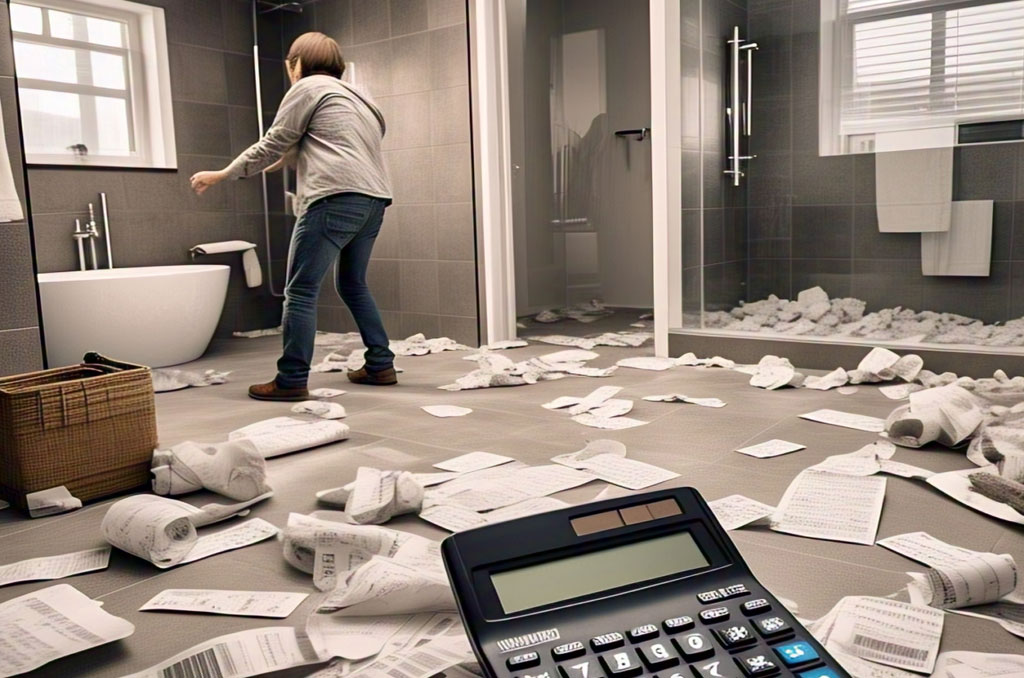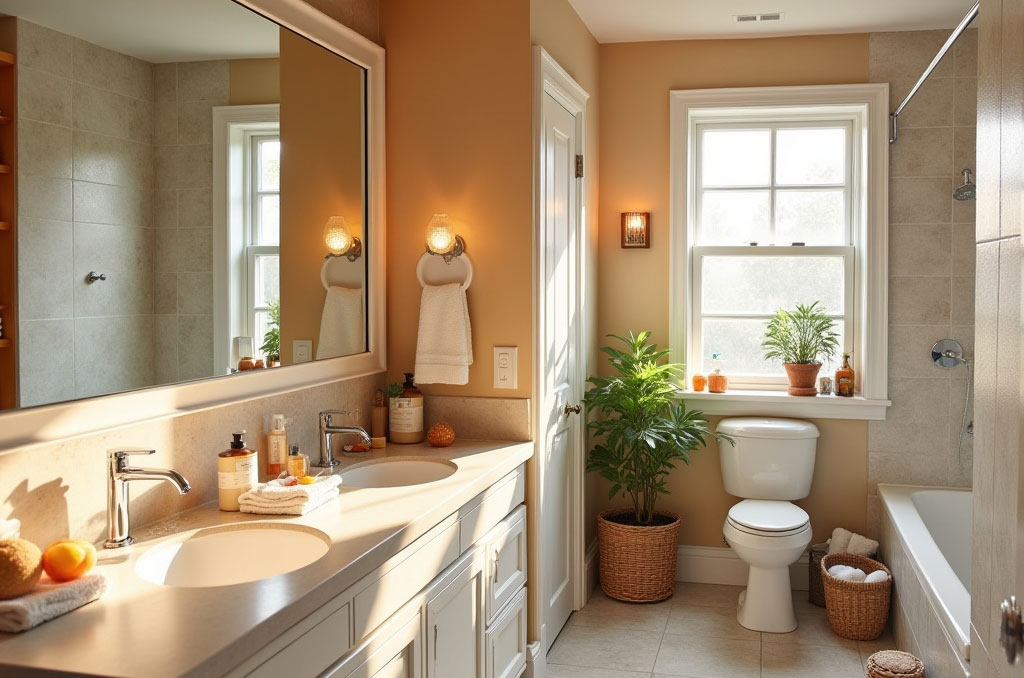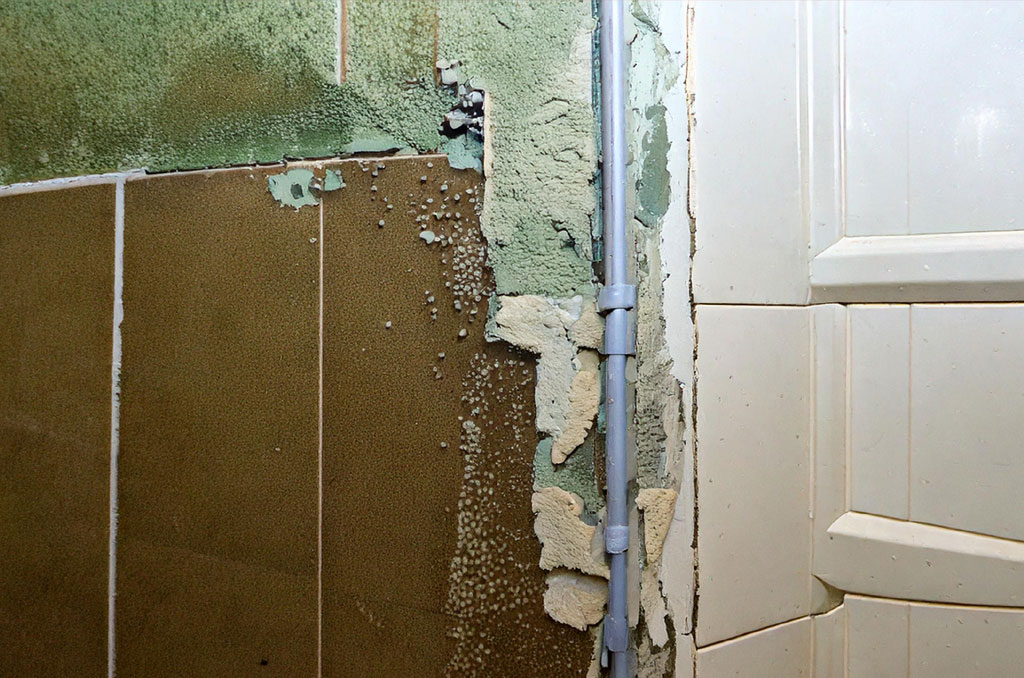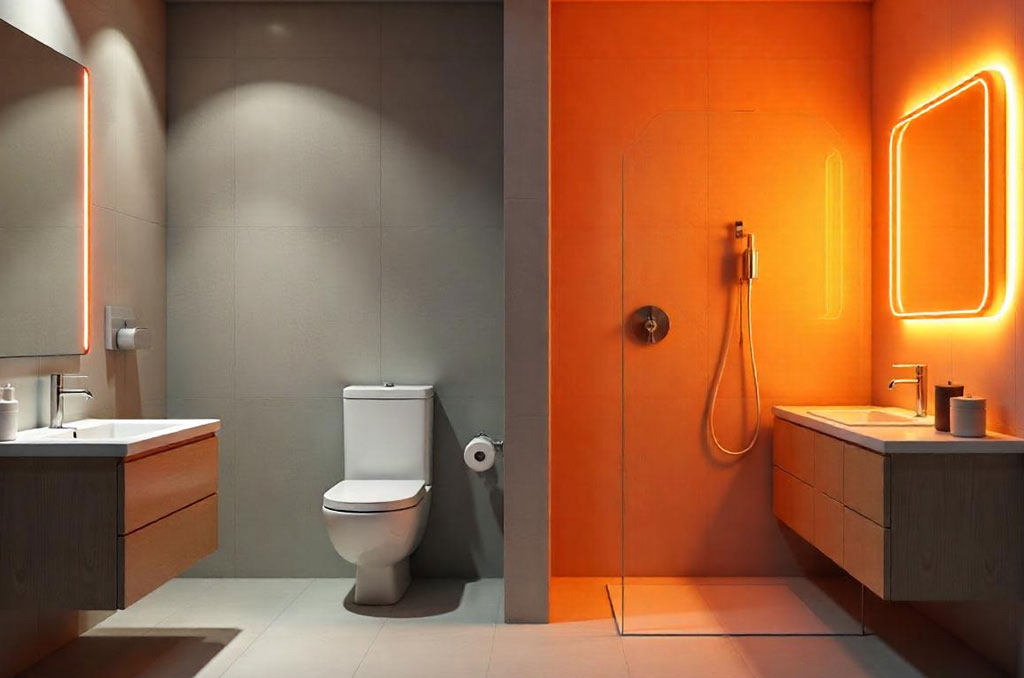7 Common Bathroom Remodel Mistakes That Could Cost You
Remodeling a bathroom can be an exciting yet challenging process, especially for first-time homeowners. While it’s tempting to dive straight into designing your dream space, overlooking key details can lead to costly mistakes. From poor planning to ignoring essential elements like ventilation and waterproofing, these errors can turn a simple upgrade into a financial burden.
To help you avoid common pitfalls, we’ve compiled a list of seven-bathroom remodel mistakes that could end up costing you more than you anticipated. Read on to learn how to make informed decisions and create a functional, stylish bathroom without unnecessary expenses.
1. Skipping the Detailed Planning Phase
 The Mistake:
The Mistake:
Many homeowners get excited about their bathroom remodel and rush into buying materials or hiring contractors without a solid plan. This can lead to several costly issues, such as miscommunication between designers and builders, purchasing the wrong materials, or underestimating the overall cost of the project. Without a well-thought-out strategy, homeowners may find themselves making last-minute changes that significantly increase expenses and delay completion.
A lack of planning also affects functionality. Poor layout decisions, incorrect measurements, or choosing aesthetics over practicality can create long-term inconveniences. For example, placing fixtures too close together can make the space feel cramped, while ignoring plumbing constraints can lead to expensive modifications. A detailed blueprint helps ensure that everything fits perfectly, meets building codes, and aligns with your budget from the start.
What You Can Do:
Start by prioritizing functionality over aesthetics. Consider how you use your bathroom daily and plan the layout accordingly. Ensure there is enough space to move around comfortably, keeping essential fixtures like the sink, toilet, and shower in practical locations. Avoid placing elements too close together, as this can make the space feel cramped and difficult to navigate. Proper spacing between fixtures not only enhances convenience but also improves accessibility for all users.
Creating a smooth flow is key to an efficient bathroom layout. Make sure doors and shower enclosures open freely without obstruction. If your bathroom is small, consider space-saving options like a wall-mounted sink or a sliding shower door to maximize usable space. Think about future needs as well—installing grab bars or a curbless shower can make your bathroom more accommodating in the long run.
Lastly, incorporate adequate storage solutions to keep clutter at bay. Built-in shelves, recessed medicine cabinets, or vanity drawers can help organize toiletries and bathroom essentials without sacrificing space. By carefully considering layout, storage, and traffic flow, you can create a bathroom that is both stylish and practical, ensuring comfort and efficiency for years to come.
The first step in effective planning is clearly defining your goals. Are you looking for a complete renovation, or do you simply want to update certain features? Understanding your vision will help you make informed choices about design, materials, and budget. Consider how you use your bathroom daily and identify any issues that need fixing, such as storage limitations, outdated plumbing, or poor lighting.
Setting a realistic budget is crucial. Many homeowners underestimate costs, leading to financial strain midway through the project. Include not only material and labor expenses but also a contingency fund for unexpected issues like plumbing repairs or structural changes. Getting multiple estimates from contractors and researching material costs can help you avoid budget surprises.
Lastly, establish a detailed timeline. Rushing through a remodel can result in mistakes and unnecessary costs, while dragging it out can be inconvenient. Work with your contractor to create a step-by-step schedule that includes demolition, plumbing and electrical work, tiling, and fixture installations. Proper planning ensures the remodel stays on track and minimizes disruptions to your daily routine.
2. Underestimating the Importance of Lighting
The Mistake:
Lighting is often an afterthought in bathroom remodels, but it plays a crucial role in both aesthetics and functionality. Many homeowners rely solely on a single overhead light, which can create shadows and uneven illumination, making it difficult to apply makeup, shave, or complete other grooming tasks. Poor lighting can also make even the most stylish bathroom feel dull and unwelcoming.
Another common mistake is failing to consider the color temperature and placement of lights. Harsh, cool-toned lighting can make the space feel clinical, while overly warm lighting may distort natural colors. Without strategically placed task, ambient, and accent lighting, your bathroom may lack the balance needed for both practicality and ambiance.
What You Can Do:
To achieve a well-lit and functional bathroom, start by layering different types of lighting. Combine ambient lighting (such as ceiling fixtures) with task lighting (like vanity lights) to ensure even illumination. Accent lighting, such as LED strips around mirrors or under cabinets, can add depth and style while improving visibility.
Choosing the right bulbs and fixtures is just as important. Opt for LED lighting, which is energy-efficient and long-lasting. Consider bulbs with a color temperature between 2700K and 3000K for a warm, natural glow. Additionally, installing dimmers allows you to adjust brightness levels based on the time of day and your needs.
Finally, maximize natural light wherever possible. Skylights, larger windows, or frosted glass panels can help brighten the space without sacrificing privacy. If natural light is limited, use reflective surfaces like glossy tiles or mirrors to enhance brightness and make the bathroom feel more spacious.
3. Overlooking Ventilation Needs
 The Mistake:
The Mistake:
Neglecting proper ventilation in a bathroom can lead to a host of long-term issues, including mold and mildew growth, excessive moisture buildup, and persistent damp odors. Without adequate airflow, humidity gets trapped, causing damage to paint, grout, and even structural elements like drywall and wood framing. Over time, this can lead to costly repairs and health hazards due to poor indoor air quality.
What You Can Do:
The best way to prevent moisture-related issues is by installing a high-quality exhaust fan that is properly sized for your bathroom. Choose a model with sufficient cubic feet per minute (CFM) to efficiently remove excess humidity, and make sure it vents to the outside rather than into an attic or crawlspace. Running the fan during and after showers helps reduce moisture buildup and protect your bathroom’s surfaces.
If possible, incorporate additional ventilation solutions such as a window or air vent to improve airflow. A window not only allows fresh air to circulate but also brings in natural light, reducing the chances of mold growth. Regular maintenance, such as cleaning the fan’s vents and checking for blockages, ensures your ventilation system remains effective in the long run.
4. Choosing Style Over Function
The Mistake:
Aesthetic appeal is essential, but prioritizing style over function can lead to a bathroom that looks great but lacks usability. Many homeowners choose trendy fixtures, materials, or layouts that may not suit their daily needs. For example, opting for a freestanding bathtub in a small space might reduce accessibility, or selecting stylish but impractical vanities could limit storage. Over time, these choices can result in frustration, inefficiency, and the need for costly modifications.
What You Can Do:
To ensure your bathroom is both stylish and practical, strike a balance between aesthetics and functionality. When selecting fixtures, consider their usability in addition to their appearance. For example, choose a vanity that offers sufficient storage while complementing the design theme. Similarly, opt for a shower layout that maximizes space without compromising comfort.
Storage is another critical aspect often overlooked in favor of sleek, minimalist designs. While open shelving and pedestal sinks may look modern, they can lead to clutter if you don’t have alternative storage solutions. Consider built-in cabinets, recessed shelves, or floating vanities that provide ample space for toiletries without sacrificing style.
Finally, think long-term when making design decisions. Your needs may change over time, so it’s wise to incorporate adaptable features. A walk-in shower with a bench, for instance, can enhance accessibility as you age. Likewise, choosing durable, easy-to-maintain materials ensures your bathroom remains functional and beautiful for years to come.
5. Inadequate Waterproofing
 The Mistake:
The Mistake:
Bathrooms are constantly exposed to moisture, and inadequate waterproofing can lead to serious structural damage over time. Water can seep through unsealed grout lines, poorly installed tiles, or improperly sealed fixtures, causing mold growth, rotting wood, and even foundation issues. Many homeowners underestimate the importance of using the right waterproofing techniques, leading to expensive repairs that could have been easily avoided with proper planning and materials.
What You Can Do:
Proper waterproofing starts with selecting high-quality, water-resistant materials. Use cement backer boards instead of regular drywall behind tiles, and apply waterproof membranes in high-moisture areas such as showers and bathtub surrounds. Ensure all seams, grout lines, and edges are sealed with high-quality caulk and waterproofing products to prevent water from seeping through cracks.
Hiring experienced professionals is another key step. While DIY waterproofing may seem like a cost-saving option, improper installation can lead to major expenses in the long run. A knowledgeable contractor will apply the right waterproofing techniques, such as sloping the shower floor correctly and using high-quality sealants to protect vulnerable areas.
Lastly, regular inspections can help you catch potential issues early. Look for signs of water damage, such as peeling paint, musty odors, or soft spots on walls and floors. Addressing small leaks or reapplying sealant as needed can prevent costly repairs and maintain the integrity of your bathroom for years to come.
6. Ignoring the Importance of Layout
 The Mistake:
The Mistake:
A poorly planned bathroom layout can lead to inconvenience, wasted space, and functionality issues. Homeowners often overlook the importance of spacing between fixtures, leading to cramped areas or awkward placements. For example, placing a toilet too close to the vanity or installing a shower door that doesn’t fully open can create daily frustrations. Ignoring workflow and accessibility can make the bathroom feel uncomfortable and difficult to use, reducing the overall enjoyment of the space.
Another common mistake is failing to account for storage needs and foot traffic patterns. A bathroom should be designed with practicality in mind, ensuring that cabinets, sinks, and other fixtures don’t obstruct movement. Without a well-thought-out layout, homeowners may find themselves constantly bumping into fixtures or struggling to store essential items, making even a beautifully designed bathroom feel inefficient.
What You Can Do:
Start by prioritizing functionality over aesthetics. Consider how you use your bathroom daily and plan the layout accordingly. Ensure there is enough space to move around comfortably, keeping essential fixtures like the sink, toilet, and shower in practical locations. Avoid placing elements too close together, as this can make the space feel cramped and difficult to navigate. Proper spacing between fixtures not only enhances convenience but also improves accessibility for all users.
Creating a smooth flow is key to an efficient bathroom layout. Make sure doors and shower enclosures open freely without obstruction. If your bathroom is small, consider space-saving options like a wall-mounted sink or a sliding shower door to maximize usable space. Think about future needs as well—installing grab bars or a curbless shower can make your bathroom more accommodating in the long run.
Lastly, incorporate adequate storage solutions to keep clutter at bay. Built-in shelves, recessed medicine cabinets, or vanity drawers can help organize toiletries and bathroom essentials without sacrificing space. By carefully considering layout, storage, and traffic flow, you can create a bathroom that is both stylish and practical, ensuring comfort and efficiency for years to come.
7. Not Researching Contractors and Materials
The Mistake:
Rushing into a remodel without proper research on contractors or materials can result in shoddy workmanship and poor-quality finishes.
Failing to research contractors and materials before starting a remodel can lead to subpar craftsmanship, unexpected costs, and dissatisfaction with the final result. Without vetting professionals or understanding material quality, you risk delays, budget overruns, and a bathroom that doesn’t meet your expectations.
What You Can Do:
Start by thoroughly vetting contractors through references, online reviews, and portfolios of past work. A reputable contractor should have positive testimonials, a history of completed projects, and proper licensing and insurance. Don’t hesitate to ask for referrals or check independent review platforms to gauge customer satisfaction and work quality.
When it comes to materials, take time to compare options and request samples before making a final decision. Visiting showrooms or home improvement stores can give you a better idea of textures, colors, and durability. Researching different brands and their warranties can also help you choose high-quality materials that fit your budget and aesthetic.
Finally, obtain multiple quotes from different contractors to get a sense of fair pricing. This allows you to compare costs, timelines, and included services. A detailed contract outlining the scope of work, materials, and payment schedule ensures transparency and helps prevent unexpected expenses down the line.
Conclusion
A successful bathroom remodel requires a careful blend of planning, research, and execution. By avoiding these seven common mistakes, you can create a functional, stylish, and enduring space that adds value to your home. Whether you’re updating fixtures or undertaking a full-scale renovation, remember that informed decisions today can save you time, money, and headaches tomorrow.
Happy remodeling, and may your bathroom transformation be smooth and satisfying!


